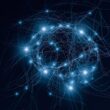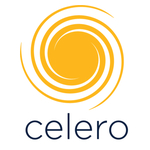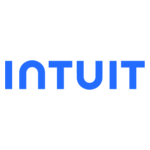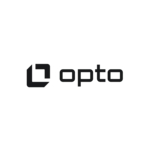Innovation at the intersection of money, AI, identity and blockchain
We’re currently seeing a great deal of innovation in financial services at the intersection of money, artificial intelligence (AI), identity and blockchain.

AI is proving to be an existential threat to identity
The emergence of generative AI has proven to be a catalyst, shining a light on this intersection, and Worldcoin from Sam Altman is its new poster child.
Banks have been custodians of key aspects of our identity for the longest time. A bank’s primary function is to move numbers from one spreadsheet to another with confidence that they know who the owners of the two spreadsheets are. And doing it securely so nobody else can see what’s occurring.
Building that confidence in each party being who they say they are has required massive investment in an ever-evolving set of processes and technologies. But the upshot is that custodianship has meant banks now play a pivotal role in validating identities. Today, if a bank agrees that “I am Dave”, it will generally be accepted as fact. Government-issued IDs, such as passports and driving licenses, provide similar comfort levels.
But AI is proving to be an existential threat to identity, and that certainty is starting to erode.
Generative AI has already started to disrupt the news and broader media industry. I recently spoke with Harry Burt, director of new business ventures, business transformation at News UK. Harry’s job is to look at the effect of new technologies, and he has concluded that for consumers, generative AI has been like a “thermonuclear bomb” in terms of its impact, creating lots of content and increasingly large amounts of fake news. From the Pope wearing a puffer jacket to articles supposedly from legitimate news sources which aren’t actually from legitimate news sources, the disinformation genie is long gone from the bottle.
The ease with which this has happened is a shot across the bow for identity. AI’s ability to create images, sounds and even videos could result in mimics, bypassing institutions’ security.
Soon, a bank vouching for someone may no longer be good enough. And this threat is the Worldcoin opportunity.
Worldcoin positions itself as a response to the era of AI, in which the need to verify personhood is critical. It also has an underlying dream of the democratisation of money.
According to Alex Blania, Worldcoin’s co-founder and CEO of Tools for Humanity, “Worldcoin’s groundbreaking technology seeks to grant everyone—irrespective of their background, location or income—a gateway into the expanding digital global economy, all the while ensuring decentralisation and safeguarding their privacy.”
And it is worth unpacking Worldcoin to take a closer look at its components.
It is intended to be the world’s largest, most inclusive identity and financial public utility, owned by everyone. The Worldcoin protocol currently consists of the following:
- World ID is a privacy-preserving digital identity designed to help solve critical, identity-based challenges, including proving an individual’s unique personhood.
- Worldcoin token (WLD) essentially acts as the first digital currency to be freely distributed to people for just being a unique human.
- World App, the first World ID-compatible app developed and operated by Tools for Humanity, enables payment, purchases and transfers globally using digital assets and fiat-backed stablecoins.
So far, more than two million people have signed up for the Orb. However, many commentators have pointed out that governments are already on the case when it comes to identity.
For example, the India Stack is a set of digital identity products centered around Aadhaar, India’s national identity programme. According to the India Stack website, more than 1.31 billion Indians (95% of the country’s population) possess an Aadhaar number, which allows them to perform a number of actions, including:
- Remotely authenticate any of these attributes via two-factor or biometric authentication: name, age, address, mobile number, email address and gender.
- Receive digitally signed and universally accepted copies of lifetime records such as driver’s licenses, educational diplomas, insurance policies and more.
- Sign documents or messages using a government-backed digital signature service.
Do Indians need Worldcoin? Maybe not. The Aadhaar number already takes an iris scan which forms a crucial part of a person’s digital identity.
Meanwhile, the US has Clear. Clear uses biometrics (fingerprint, iris and face recognition) to establish an individual’s identity. The most well-known application of Clear’s technology is in US airports. Members can use dedicated Clear lanes at airport security checkpoints, often leading to a faster and smoother screening process. By using Clear kiosks, members can verify their identity using biometric data, bypassing the manual ID check done by security personnel. Clear’s applications are broadening into other aspects of the travel experience, such as boarding passes or hotel check-ins, leisure and healthcare.
Amazon is also now muscling in with Amazon One, a palm-scanning technology that will be rolled out in its Whole Foods stores.
It is becoming clear that biometric-based identities are more secure and remove significant friction in a vast swathe of existing processes. This recognition is driving interest from many quarters. And combined with blockchain, finance and AI, innovative products and services are emerging.
Consumers are starting to have to answer who they want to store and manage their identities. Private enterprise? Governments? Or both? It’s probably the value add that will help people decide. Who doesn’t want to travel faster, shop smarter or have access to a global digital wallet?
Anyway, I’ve got to go. I have an appointment for my Worldcoin iris scan!
About the author
 Dave Wallace is a user experience and marketing professional who has spent the last 30 years helping financial services companies design, launch and evolve digital customer experiences.
Dave Wallace is a user experience and marketing professional who has spent the last 30 years helping financial services companies design, launch and evolve digital customer experiences.
He is a passionate customer advocate and champion and a successful entrepreneur.
Follow him on Twitter at @davejvwallace and connect with him on LinkedIn.











































